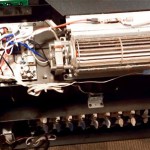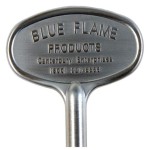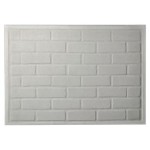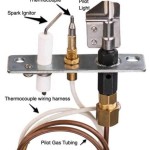Can You Paint A Fireplace With Regular Paint? Understanding the Risks and Alternatives
Painting a fireplace can dramatically transform a living space, offering an instant refresh and a chance to modernize or personalize its appearance. However, the question of whether regular paint can be used on a fireplace is a crucial one, often fraught with potential problems if not approached with informed consideration. Regular paint, typically formulated for interior walls, has limitations that make it unsuitable for the unique conditions surrounding a fireplace. Understanding these limitations is paramount before beginning any painting project.
The fireplace environment presents specific challenges that standard interior paints are not designed to withstand. These include high temperatures, direct flame exposure in certain areas, and the potential for soot and creosote buildup. Regular paints lack the heat resistance and durability required to reliably perform under these demanding conditions. Therefore, the use of regular paint can lead to various issues, ranging from cosmetic imperfections to potentially hazardous situations.
Choosing the appropriate paint for a fireplace involves assessing the material of the fireplace itself (brick, stone, or metal), the type of fireplace (wood-burning, gas, or electric), and the specific areas to be painted. Different materials and fireplace types will require different approaches and specialized paints formulated to address these specific requirements.
The Dangers of Using Regular Paint on a Fireplace
The application of regular paint to a fireplace, particularly a functional wood-burning fireplace, introduces several significant risks. These risks stem from the paint's inability to withstand the high temperatures generated by the fire and the corrosive effects of smoke and soot.
Firstly, regular paint is not heat-resistant. When exposed to the elevated temperatures of a fireplace, the paint can begin to blister, peel, and chip. This creates an unsightly appearance and necessitates frequent touch-ups or even complete repainting. Beyond the cosmetic issue, the peeling paint can become a source of airborne particles, potentially causing respiratory irritation or allergic reactions, particularly for those with pre-existing respiratory conditions.
Secondly, regular paint can release harmful fumes when heated. Many standard interior paints contain volatile organic compounds (VOCs), which are chemicals that evaporate into the air at room temperature. When heated, the release of VOCs is accelerated, potentially leading to poor indoor air quality and health problems ranging from headaches and dizziness to more serious long-term health effects with prolonged exposure. The specific VOCs present and their concentrations will vary depending on the paint's formulation.
Thirdly, regular paint is often flammable. While not all paints are highly flammable, most are combustible to some degree. Applying a flammable paint to a surface that is regularly exposed to open flame or intense heat significantly increases the risk of a fire. Even if the paint does not ignite directly, it can contribute to the spread of a fire by fueling the flames. This risk is especially acute in the firebox or any area that comes into direct contact with the fire.
Understanding Heat-Resistant Paint Options
To safely and effectively paint a fireplace, it is essential to use paints specifically formulated to withstand high temperatures. These paints are designed to resist blistering, peeling, and fading, while also minimizing the release of harmful fumes when heated. Several types of heat-resistant paints are available, each suited for different applications and materials.
High-temperature paint, often referred to as stove paint or engine enamel, is designed to withstand extreme temperatures, often up to 1200°F (649°C) or higher. This type of paint is typically used on metal surfaces that are directly exposed to heat, such as the firebox of a wood-burning stove or the metal components of a gas fireplace. High-temperature paints are available in both aerosol spray cans and liquid forms for brush application.
Masonry paint is specifically formulated for porous surfaces like brick and stone. It is designed to be breathable, allowing moisture to escape from the masonry without damaging the paint film. While not always specifically heat-resistant to the same degree as stove paint, some masonry paints are designed to withstand moderate heat exposure. It's crucial to check the manufacturer's specifications to ensure the paint is suitable for fireplace applications.
Another option is specialized fireplace paint, which is formulated to withstand the specific conditions of a fireplace environment. These paints are often resistant to heat, smoke, soot, and moisture. They are typically available in a variety of colors and finishes, allowing for customization without compromising on performance. When selecting a specialized fireplace paint, it is crucial to consider the substrate (brick, stone, or metal) and the specific area of the fireplace being painted.
Preparation and Application Techniques for Fireplace Painting
Proper preparation is critical to achieving a successful and long-lasting paint job on a fireplace. This involves cleaning the surface thoroughly, addressing any existing damage, and applying appropriate primers to ensure proper adhesion.
The first step is to clean the fireplace thoroughly. This involves removing any loose debris, soot, or creosote. A wire brush can be used to scrub away stubborn deposits, followed by a thorough rinsing with water and a mild detergent. For particularly difficult stains, a specialized masonry cleaner may be necessary. Allow the fireplace to dry completely before proceeding to the next step.
Next, inspect the fireplace for any damage, such as cracks or loose mortar. These should be repaired before painting. Use a masonry patching compound to fill in any cracks and replace any loose or crumbling mortar. Allow the patching compound to cure completely according to the manufacturer's instructions.
Primer is a critical step in ensuring proper paint adhesion, especially on porous surfaces like brick and stone. A masonry primer is specifically designed to penetrate the surface and create a stable base for the paint. Apply the primer evenly, following the manufacturer's instructions. Allow the primer to dry completely before applying the topcoat.
When applying the paint, use high-quality brushes or rollers designed for the specific type of paint being used. Apply thin, even coats, allowing each coat to dry completely before applying the next. Avoid applying thick coats, as this can lead to runs, drips, and poor adhesion. Follow the manufacturer's recommendations for drying times and the number of coats required.
For metal surfaces, a rust-inhibiting primer is recommended before applying the heat-resistant paint. This will help to prevent rust from forming and ensure a long-lasting finish. When painting metal surfaces, use a brush or roller designed for smooth application to avoid brush strokes or roller marks.
Finally, ensure adequate ventilation during the painting process. Open windows and doors to allow fresh air to circulate. This will help to minimize exposure to fumes and promote faster drying times. Wear appropriate protective gear, such as gloves and a respirator, to further minimize exposure to chemicals.

How To Paint Your Fireplace Brick Surround

How To Paint The Inside Of A Fireplace Simple Upgrade Maria Louise Design

Modern Rustic Update To Fireplace Paint And Wall Behr

How To Paint A Brick Fireplace What Use Home With Janny

How To Paint A Brick Fireplace Beamin Moore

How To Paint A Fireplace And Its Cost Dallas Paints

How To Make Over A Brick Fireplace Quickly Easily And Ly Pinkscharming

Paint Your 80s Fireplace So Much Better With Age

Paint Your Brick Fireplace In 2 Easy Steps Birkley Lane Interiors
How To Update A Brick Fireplace With Chalk Paint Diy Beautify Creating Beauty At Home
Related Posts








